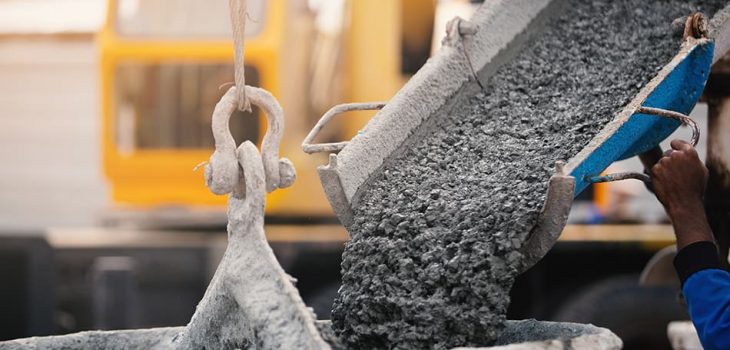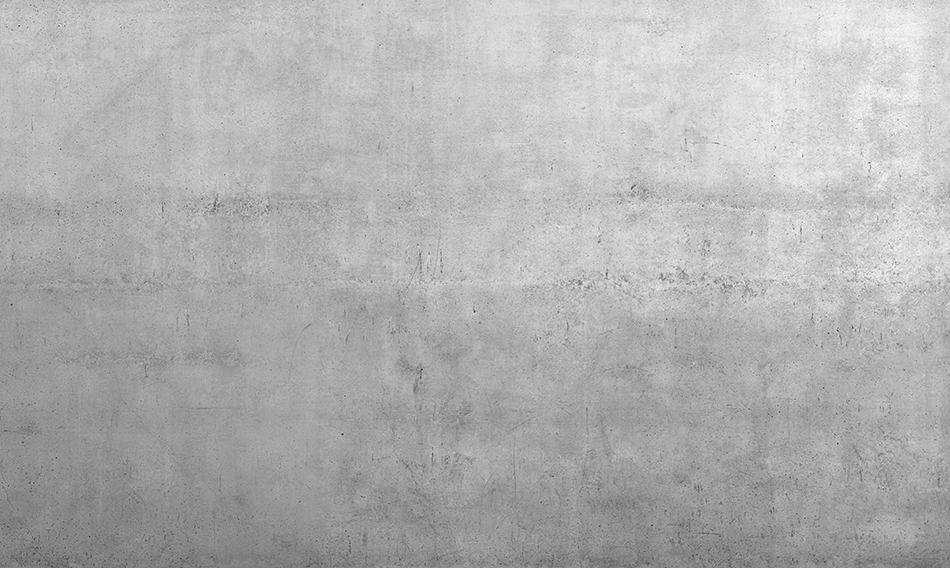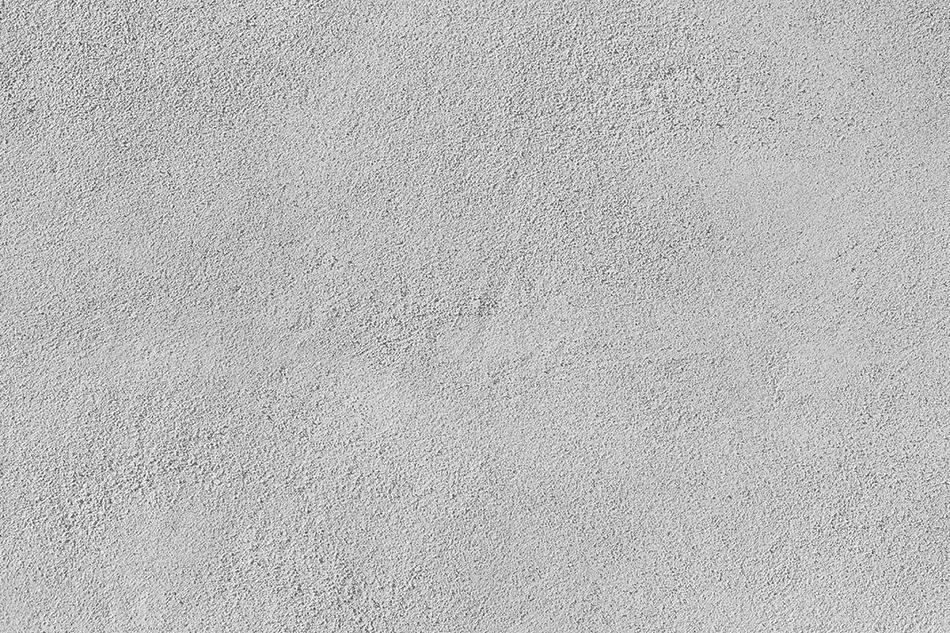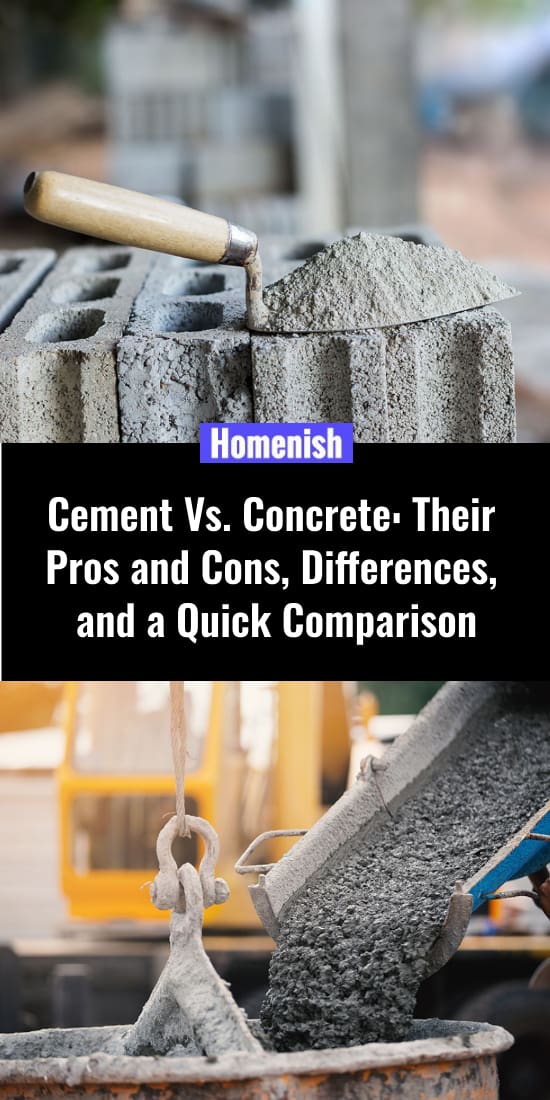Concrete is often confused with cement since both are used synonymously. But they’re not one and the same. Knowing the basic fundamentals of these construction materials will help you distinguish the differences between the two.
In this article, I will explain what cement and concrete are, their pros and cons, as well as a comparison between these materials.
What is Cement?
Cement is a fine powder created from crushed limestone and clay. These materials act as a glue-like binder to hold the concrete together. Apart from limestone and clay, cement can be made from many other materials, but it can never be used on its own.
In the old days, cement was made from burnt limestone, bricks, volcanic ash, and crushed rock. Today, Portland cement is among the most commonly used and widely available types of cement around the world.
Portland cement is one of the most cost-effective construction materials due to its availability. This cement is made from limestone and shales. The name Portland originates in the island of Portland, England. The famous mason Joseph Aspdin introduced this cement after discovering how hard it gets when mixed with water.
Some typical examples of Portland cement include acid and alkali-resistant cement and sulfate-resistant. The white version of Portland cement is usually used for enhancing architectural details.
There is also the hydraulic type of cement that’s used for stopping water leaks in masonry or concrete. This fast-hardening cement has waterproofing abilities and can be used in wet conditions.
Advantages of Cement
- Cement is an excellent construction material that’s used for its high binding strength.
- You can find general-use cement in virtually every building work.
- Cement is specifically used in structural elements where high strength is required at an early period of time.
- There are five types of cement, ranging from general use type I to higher strength type II and III as well as Portland cement. Every type of cement you require can easily be found in DIY and hardware stores at affordable prices.
Disadvantages of Cement
- Cement can’t be used for large-scale construction works since it has higher heat hydration than concrete.
- The durability of cement is low.
- Cement is less solid than concrete and prone to cracking. It is also difficult to cure, thus making it unsuitable for areas that are susceptible to movement.
What is Concrete?
Concrete is the finishing product that results from mixing sand, water, admixtures, and of course, cement together. This mixture must be used whilst it is in a wet state before it solidifies over time. Once the concrete mixture has hardened, it will gain strength and durability.
The Roman Empire was the first civilization that used concrete for building houses. The Romans used a mix of pumice, pozzolana, and lime to make concrete. The largest concrete dome that was built in 120 A.D. is the former Roman temple, Pantheon in Rome.
Concrete comes in varying strengths and appearances and is typically made from 4 key ingredients. These include:
- Water: the most crucial element of concrete is water. The quality of concrete is determined by how much water is used. Water creates a chemical reaction when it comes into contact with cement. It also aids workability as long as the right ratio of water to cement is used.
- Cement: this is the binding ingredient that holds all the materials together.
- Fine and coarse aggregates: sand.
- Admixtures: other than cement, water, and sand, admixtures are also used before or during the mixing process. Some examples of admixtures include silica fumes, slags, and water reducers.
Advantages of Concrete
- Concrete ingredients are easily available in most DIY and hardware stores.
- Unlike stone, there are no flaws or defects in concrete.
- Concrete is highly durable and can be made into any shape.
- The casting process can be done on-site, which is economical and time-saving.
- Concrete is maintenance-free and doesn’t deteriorate with age.
- Concrete can withstand extreme temperatures. Even though concrete absorbs water, it is a mix of cement and other stuff; hence it is not as porous as cement.
- It is also an excellent soundproofing material.
Disadvantages of Concrete
- Compared to cement, the tensile strength of concrete is somewhat low.
- Concrete has more weight than strength.
- It is less ductile and may contain soluble salts, which cause the salty deposits to resurface on the concrete.
Cement Vs. Concrete: What are the Main Differences?
You will by now have realized that cement is actually an ingredient in concrete, so the two materials aren’t the same. Concrete is a mixture of cement, water, and aggregates, whereas cement contains limestone and clay. So we can safely say that concrete needs cement in order for it to be used in building projects.
Cement comprises up to 15 percent concrete mix through a process known as hydration, where the water and cement bind together. This hardening process turns into concrete. Generally, the older the concrete, the stronger it becomes.
Virtually all types of concrete contain cement. But there is nothing called cement sidewalk as you might commonly hear because the material is of no use on its own. The correct term is, therefore, concrete sidewalk.
Which is Better: Cement or Concrete?
Concrete is More Durable
Whether you use concrete on your walls, sidewalk, or floor, this building material is known for its longevity. Concrete has a great reputation for lasting hundreds of years.
In fact, the older concrete gets, the stronger it becomes. Cement, on the other hand, is much less durable and prone to cracking.
Cement is Only Suitable for Small Projects
While cement is only suitable for smaller jobs, concrete works very well in both large and small projects. Concrete is one of the longer-lasting and sturdiest materials that is highly favored by both commercial and residential builders.
Countless structures are made from concrete, from sidewalks and schools to bridges and other heavy-duty buildings. Having said that, you don’t need to be a professional handyman to work with concrete. Amateur DIYers can also complete their home improvement projects using concrete, so whether you want to install kitchen countertops or lawn edging, you can easily use concrete to achieve success.
Cement by comparison, can only be used for small jobs, such as grouting or to repair minor dents or cracks in concrete.
Concrete is More Sustainable
With the growing popularity of green construction methods, the role of concrete in the environment has become more important than ever. Since this material can withstand adverse weather conditions and gain strength as it ages, it makes sense to choose concrete over cement.
What’s more, the concrete from demolished structures can be crushed into new components, thus making this material a more sustainable option.
In addition to being sustainable, concrete is highly energy efficient because of its permanent thermal mass and the ability to absorb heat. This is the reason why many homeowners opt for concrete walls and floors as a green alternative.
Concrete Comes in Many Different Types
With dozens of different types of concrete to choose from, you’ll be spoiled for choice. Each type of concrete serves a specific purpose. For example, crack-resistant fiber-reinforced concrete is a great choice for driveways. There is also the quick-track concrete, which sets in the fastest time.
Cement comes in 5 different types, but since its uses are limited and it is much less durable than concrete, it doesn’t score high in our comparison list.
Good to Know
So you’ve learned about the differences between cement and concrete and now wish to use concrete in your building projects. You can buy ready-to-use bags of mixed concrete that already contain sand, gravel, and cement.
All that’s needed is some water, and you’re ready to go. These ready-made bags are ideal for small projects, such as building concrete fence posts. For larger projects, however, you should buy bags of cement and mix them with gravel and sand. Some manufacturers will deliver pre-mixed concrete in large containers. These are often called ‘ready-mixed’.
To ensure the strength of your concrete, you must use the right type of cement. As a rule of thumb, type I cement is the most commonly used material in most concrete projects. For precast shapes that require faster curing time, opt for type III.
Keep in mind that water plays an essential role in mixing concrete, so the less water you use, the better. Too much can weaken the cured concrete, while too little will be unworkable. Tip: do a slump test before laying the wet concrete in order to ensure the water content is in the correct ratio.
Not sure what a concrete slump test is? Let me explain briefly how you can do a quick slump test to measure the consistency of your fresh concrete.
- Fill a plastic cup with freshly mixed concrete.
- Place the full cup upside down on a flat surface.
- Gently vibrate the cup with your hands.
- Measure the slump’s distance with a ruler. It should be around half the height of the cup. If it’s too dry, add more water.
And that’s it! You’re now ready to use concrete for your small and large home improvement projects.










